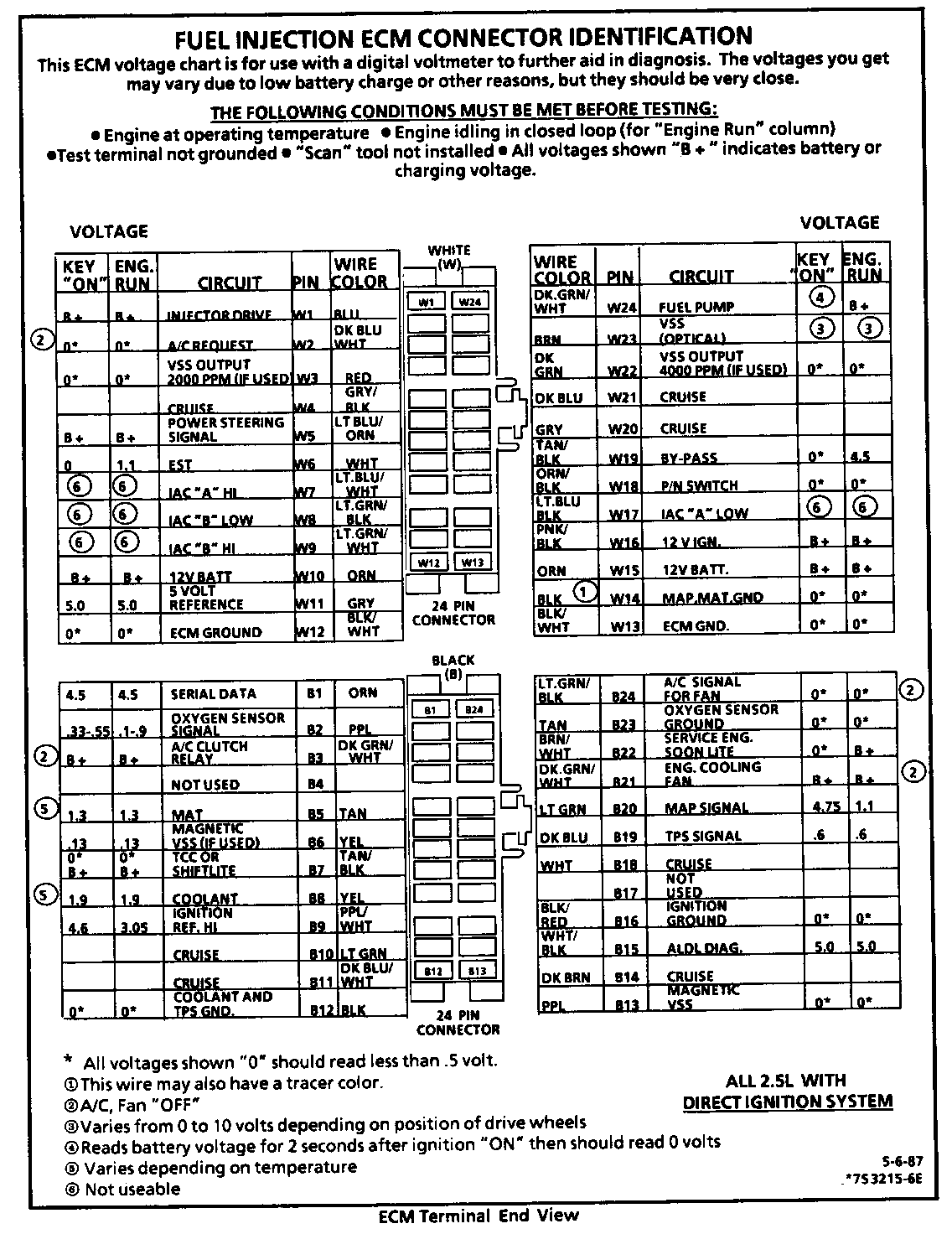DIRECT FIRE IGNITION SYSTEMS DIAGNOSIS INFORMATION

MODELS AFFECTED: 1987 CIMARRONS
Recent studies of returned parts have shown that non-defective Direct Ignition System (DIS) modules are being replaced. Before replacing a module for an intermittent long crank or no-start, miss, backfire, or hesitation, perform the following:
Intermittent Long Crank or No-Start
If the customer comment is intermittent long crank, or intermittent no-start, the problem is most likely not in the ignition system. Verify this by:
- Testing for spark with the ST-125 tool while cranking. - Testing for rpm using a "scan" tool while cranking.
NOTE: If using the OTC 2000 "scan" tool, refer to DSIB 87-1-40A, Group O, "Scan Tool Update."
This check verifies the correct operation of the ignition system. If either test fails, refer to chart A-3 "Cranks But Will Not Run" on page 6E3-Al-15 of the Service Information Manual.
Intermittent Miss, Backfire, Hesitation
An intermittent miss, backfire, or hesitation may be caused by a defective coil. Refer to the charts in Section 6E3-C4 of the Service Information Manual for diagnosis procedures. To check coil resistance, refer to Serviceman Bulletin T-88-9, Group 6D, "Engine Miss, Backfire, Hard Start, Hesitation, or Stall".
NOTE: The coil, module, and sensor are available separately from GMSPO. The coil/module assembly need not be replaced and will no longer be serviced.
For any intermittent condition found, the six-way connector to the module should be checked for proper connection. This check should include:
- Check for the presence of weatherpack seal. If present, check for damage (cuts, rib broken). Replace if necessary.
- Check terminal alignment in connector cavities. All terminals should be at the same height. Any terminal "backed out" of the cavity should be properly seated.
- Visually check inside ramp of terminal (tongue) in connector. If ramp is bent or damaged, the terminal should be replaced. Do not place any object (paper clip, loose terminal, etc.) inside of terminal.
- Make sure connector locking arm locks over ramp on module when making connection.
Under no circumstances should the crankshaft sensor or module baseplate be shimmed. This will not improve any of the above conditions and could cause other problems.
Coil mounting screws to baseplate should be torqued to 4-5 N-m. (35-44 lbs. ft.). Higher torque may strip the aluminum baseplate.

General Motors bulletins are intended for use by professional technicians, not a "do-it-yourselfer". They are written to inform those technicians of conditions that may occur on some vehicles, or to provide information that could assist in the proper service of a vehicle. Properly trained technicians have the equipment, tools, safety instructions and know-how to do a job properly and safely. If a condition is described, do not assume that the bulletin applies to your vehicle, or that your vehicle will have that condition. See a General Motors dealer servicing your brand of General Motors vehicle for information on whether your vehicle may benefit from the information.
